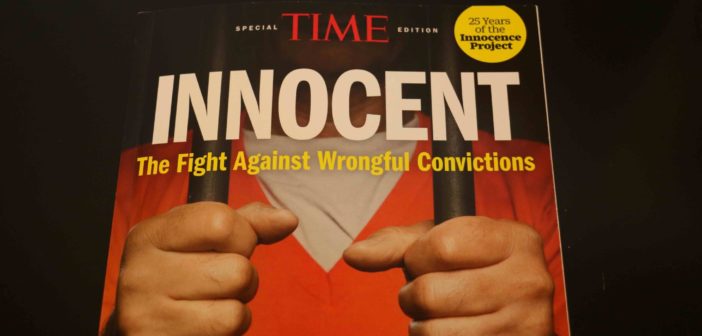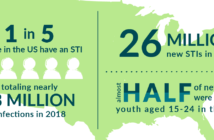[tribulant_slideshow gallery_id=”14″]
By Travis Farmer
In America, one of the most common phrases in the judicial system is “innocent until proven guilty.” But what happens when someone is innocent but proven guilty?
A survey by C. Ronald Huff, the director of the Criminal Justice Research center at The Ohio State University, says that more than 10,000 people are wrongfully convicted of a serious crime every year. This alarming figure is found using math and is actually a very conservative number, according to Huff. If there are so many wrongful convictions each year, what is the protocol for this seemingly common event?
Once convicted, prisoners have an avenue to get out if they were truly wrongfully convicted. Prisoners may appeal to a higher court than the one that convicted them, for example, The Florida Supreme Court or even a federal level appellate court.
One recent example of a wrongful conviction can be found on the Netflix original documentary “Making a Murderer” with the case of Steven Avery. Avery was convicted in 1985 of rape and attempted murder, despite having a strong alibi and the witness composite sketch looking nothing like him. Even so, he was convicted due to a strong bias from the local sheriff, whose wife was Avery’s cousin who shared a feud with him. Avery sat in prison for 18 years until science advanced to a point where DNA evidence exonerated him of the crime. The documentary then focuses on his life after his release, his negligence lawsuit against the sheriff’s department, and later his second conviction for murder.
Avery and many others who are wrongfully convicted, have been assisted by The Innocence Project, which is a non-profit organization dedicated to finding cases of wrongful convictions and working to get people who have been wrongfully convicted released using evidence.
David Persky, a professor of criminal justice at Saint Leo University, says that one of the biggest advances in wrongful convictions is the progress of forensic science and DNA evidence.
“As forensic technology has improved, there have been more and more cases that have been reopened in recent years for the admission of evidence that has exonerated inmates that were wrongly convicted,” said Persky.
The Innocence Project has achieved the release of 343 wrongfully convicted prisoners, of which 20 were on death row, through way of reexamining DNA evidence, according to The Innocence Project on the organization’s website. The Innocence Project has also assisted in finding more than 147 actual criminals in the cases they were examining for release. Also, for those released people with the assistance of the Innocence Project, the average jail time served was 13 years.
Nevertheless, many states have different policies to respond to wrongful convictions as well as different policies based on time served. In all states, the wrongfully convicted are released and usually pardoned of whatever crime is on their record. However, compensations for the time served is more complex. As of 2017, the Federal government, the District of Columbia, and 30 states had wrongful conviction compensation laws, but 18 states do not, according to The Innocence Project. Many people, who have been wrongfully convicted and then released, receive next to no compensation from the state; according to the Innocence Project, only 50 percent of the cases they have resolved have received compensation. Fortunately, many of these cases find help in civil suits against the government and pave the way for future law changes.
The Innocence Project is trying to get compensation laws changed; according to their website, they strive for the wronged to receive financial and legal compensation. The average compensation in states with such laws and as well as federally is $50,000 for every year spent in prison, and $100,000 for every year spent on death row. However, only 50 percent of wrongfully convicted cases are rewarded financial compensation, as reported by The Innocence Project. According to The Florida Legislature’s website, Florida statute 961.06 enforces this monetary compensation, as well as a free 120 credit hour college education, reimbursement for all court fees, and a clearing of the person’s criminal record.
Of the 343 released cases that were released by the Innocence Project, 70 percent were of minority groups. This statistic is a large focus to many groups, such as the NAACP Legal Defense and Education Fund. In American history alone, it is impossible to know just how many minorities, specifically African Americans, were wrongfully convicted simply for their color. Especially in the 19th and 20th centuries, some truly unfair cases were brought against minorities. For example, Ed Johnson was an African American man accused of sexually assaulting a Caucasian woman in 1906 Chattanooga. The victim was knocked out with a certain weapon, and Johnson was arrested after he was seen supposedly carrying the weapon, despite the fact he didn’t own such a thing and one could not be found. Ed Johnson was sentenced to death by an all-white jury, despite several solid alibis. When his conviction was overturned by the United States Supreme Court examined the case and ordered his execution be delayed; however, when this news broke, a mob with the help of the sheriff stormed and jail and murdered Johnson anyway. Johnson’s tragic story is just one of many in the history of racial bias in the justice system, standing with the likes of the Scottsboro Boys, the Trenton 6, and the Central Park 5. All these cases involved minorities, who were punished unfairly by the criminal justice system.
There have been many steps made in recent years for both compensation and prevention. Under the George Bush administration, the federal $50,000 per year spent in prison compensation law was written, and under the Obama administration forensic science was funded with the goal of preventing and overturning wrongful convictions.
In conclusion, wrongful convictions are a massive threat to the integrity of the criminal justice system. The issue is receiving examination from advocates, like The Innocence Project as well as the United States government. Thanks to this examination, there have been many steps in resolving the issue in recent years.





